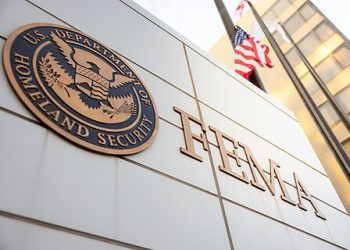Cyberattacks don’t always begin with malware or malicious links. Increasingly, they start with something far more familiar and human: a phone call.
Known as vishing — short for voice phishing — this form of social engineering manipulates trust, tone, and urgency in real time. And as AI-enhanced voice technology becomes more accessible, these attacks are getting harder to detect and easier to scale.
The Psychology Behind the Call
Unlike phishing emails, which can be scanned, forwarded, or deleted, voice-based attacks operate in a synchronous channel. There’s no time to pause or reflect. The scammer speaks, the employee responds. That immediacy gives the attacker control, especially when the call comes with a pretext that sounds urgent and plausible: a payroll issue, a compliance audit, a vendor payment error. The voice on the other end often impersonates a figure of authority, creating pressure to act without verification.
In 2023, a UK-based energy firm fell victim to a sophisticated vishing attack involving a deepfake voice message that mimicked the CEO. The attacker used previously leaked recordings and internal organizational details to craft a convincing audio request for an urgent financial transfer.
The company’s finance officer, believing the call was authentic, initiated a six-figure transfer before the fraud was discovered. Investigators later confirmed the voice had been generated using AI, based on samples taken from public webinars and press appearances.
Vishing vs. Phishing: What Sets It Apart
While phishing relies on digital deception, vishing exploits conversation. Attackers can adjust their tone, mirror the target’s language, and escalate pressure mid-call. They may combine phone calls with previous emails or texts to build legitimacy — a tactic known as multi-channel pretexting. The rise of voice cloning and caller ID spoofing makes it even harder for victims to distinguish a scam from a legitimate request.
What makes vishing uniquely dangerous is its ability to bypass both technical controls and routine skepticism. Many security awareness programs still focus heavily on email-based threats. But a phone call, especially from a seemingly familiar voice, creates a much more personal attack surface.
Recognizing the Signs of a Vishing Attack
There is no universal script, but most vishing attacks share certain characteristics. The caller often conveys urgency — a payroll problem that must be fixed immediately, a bank account flagged for suspicious activity, or a request from a senior executive that can’t wait. They’ll avoid giving you time to double-check or ask questions. In more advanced cases, the caller may reference internal tools, recent events, or even employee names scraped from LinkedIn or leaked databases.
Red flags include:
Pressure to act quickly without documentation
Requests for financial transfers or login credentials
Calls that claim to be “confidential” or discourage verification
Unfamiliar or blocked caller IDs using authoritative language
In AI-enhanced vishing attempts, the voice may sound eerily accurate — copying tone, cadence, and phrasing from publicly available recordings.
How to Prevent Vishing in the Workplace
The first step is acknowledging that vishing is not fringe. It’s not a consumer-only scam or a problem confined to call centers. From CFOs to support staff, everyone with a phone is a potential target.
Organizations need to train teams to recognize voice-based manipulation the same way they’ve been trained to detect suspicious emails. That means exposing employees to simulated vishing scenarios, ideally involving context they actually encounter in their role.
Equally important is creating a culture where hesitation is encouraged. No one should be punished for double-checking a request. On the contrary, verification protocols should be standard practice for any request involving money, credentials, or access. Using a second communication channel (like Slack, Teams, or an internal phonebook) to confirm requests is not just good hygiene — it’s necessary.
Technical Safeguards: Limited but Useful
Technology can help, but it won’t replace judgment. Caller ID spoofing is widespread, and most phone systems weren’t designed to authenticate identity. However, some solutions can flag anomalous calling behavior, scan for robocalls, or detect known scam patterns.
Companies can also implement internal whitelisting of trusted numbers, restrict who can initiate certain transactions by phone, and log all financial requests for later audit.
When It Happens: Responding to a Vishing Attack
If an employee falls victim to a vishing attack, speed matters. Immediately inform IT and security teams. Block any further outgoing transfers. If credentials were shared, reset them and monitor for suspicious access. And always report the incident to the appropriate authority — whether it’s the FBI’s IC3 in the US, or the local CERT in Europe.
Importantly, don’t treat the incident as a disciplinary failure. The best response is structured debriefing: what worked, what didn’t, what should change. That feedback loop is what helps teams build real resilience.
Looking Forward
With AI advancing rapidly, the voice is becoming an increasingly dangerous attack vector. In a few years, cloned voices may be used not only in scams, but in surveillance, reputation attacks, and insider manipulation. Organizations that begin investing now in training, awareness, and scenario-based defense will be far better prepared.
Because in the end, voice isn’t just a communication channel. It’s a vulnerability — unless people are trained to treat it as a risk surface.
Read more:
Vishing Attacks: When a Phone Call Becomes a Threat
















